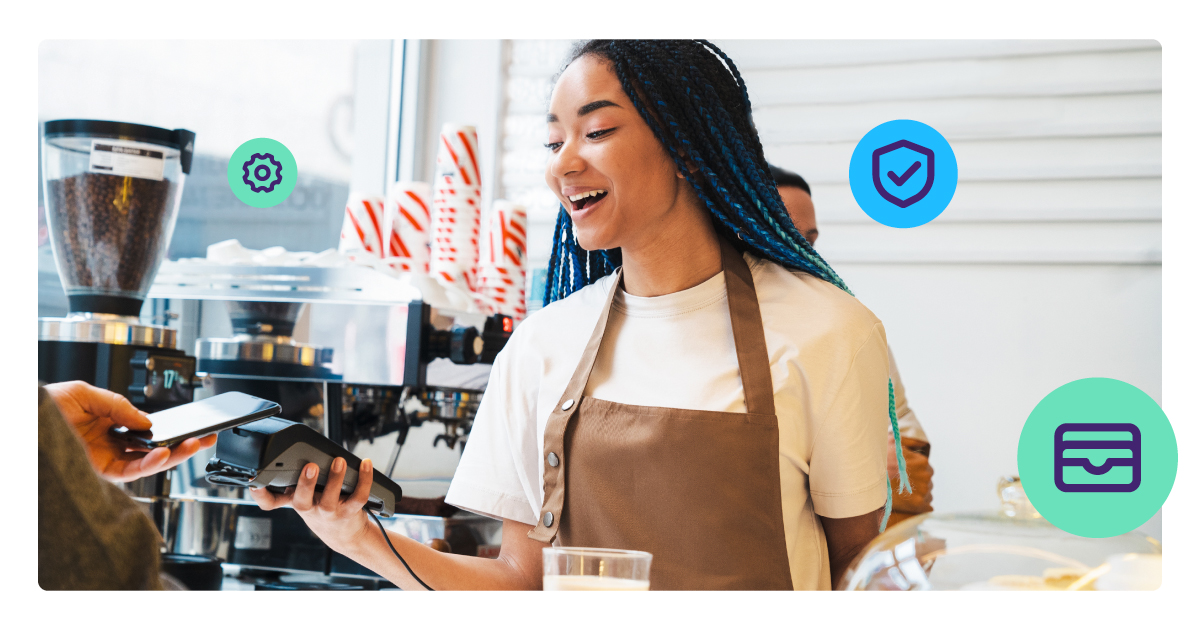Once your merchants are onboarded, the next big question is: How do they actually start accepting payments? Whether they’re selling online, in-store, or through mobile apps, a seamless payment experience is crucial — not just for moving money but for creating a frictionless customer journey that keeps them coming back.
In this second part of our series on SaaS merchant journeys, we’ll dive into payments acceptance — the process of enabling your clients to take card and digital payments from their customers. Getting this right isn’t just about transactions; it’s also about creating an outstanding user experience and ensuring your software remains competitive.
If you missed part one, we covered the importance of merchant onboarding — the first critical step in offering embedded payments. Now, let’s explore the three key sales channels your users rely on, what they need from you in each, and how to integrate the right payment solutions into your platform.
The Three Main Channels of Software-Based Digital Payments
When your users sell to their end customers, they’re almost certainly selling through one (or more) of these three channels:
- Online payments
- In-person payments
- Recurring subscription payments
As a payments provider, a big part of your job is ensuring you can set your users up with the right payment systems to make selling through these three channels simple and intuitive.
Online Software Payments:
Online card payments, also called “card-not-present” or CNP payments, happen over the internet, either through a website, a mobile app, or directly through your software. They use specialized software called a payment gateway to securely move the end customer’s payment data between your users and the card networks and banks involved in making transactions possible.
This is a wide category. Thankfully, there are several ways you can integrate online payments into your environment, including no-code, low-code and fully custom options.
No-code online payments include things like hosted payment pages provided by your processing partner or integrations with pre-built ecommerce shopping carts. The one common aspect of these online payments is they all happen outside your software.
Low-code online payments include embeddable payment components that you can integrate into your platform. They provide basic payment functionality without the need to spend a lot of time on custom design or implementation.
Custom online payment solutions enable you to design fully optimized payments workflows for your users directly within your platform, using API connections to your processing partner. This option is more complex and requires more work on your end, but it’s completely flexible and opens up a whole world of user experiences and advanced features.
It’s important to remember that no matter which option you choose, you won’t have to worry about taking on any additional risk — sensitive information like private credit card numbers will still be handled by your payment provider.
In-Person Software Payments:
Depending on what they sell, your users might also need physical hardware to enable them to take traditional card payments at the counter. Part of your payments acceptance journey will be supplying users with that hardware. There are three main ways you can do this, including traditional terminals, mPOS solutions and SoftPOS solutions.
Traditional payment terminals are the debit and credit pads we’re all used to seeing at store checkouts. These are reliable choices your users’ end customers are already very familiar with — but they can be expensive and require specialized support.
mPOS solutions use wireless or wired card readers alongside your users’ mobile devices to turn them into payment systems, reducing the need for expensive hardware.
SoftPOS solutions, like tap-to-pay, eliminate the specialized hardware altogether and process payments directly through your users’ smartphones or tablets, using nothing but a mobile app and the device’s built-in NFC tap capability.
The right type of hardware for any given user will depend on a variety of factors, including their size, their comfort with the technology and the demands of their end customers. To meet the widest possible set of needs, it’s critical to find a processing partner that can offer you a full suite of hardware solutions to resell.
Recurring Software Payments:
Recurring (or subscription) payments are initially set up by the end customer and then automatically charged on a pre-set, periodic basis (such as monthly or yearly). Recurring payments are common for a variety of businesses and power everything from gym memberships and professional services to streaming platforms. You might even use recurring subscription payments for your own software.
Offering frictionless ways to set up, manage and collect subscription payments is a critical part of the payment acceptance journey. But, enabling recurring payments requires a few things.
First, you’ll need a way to store sensitive data so payments can be automatically charged without requiring any action from end customers. You’ll also need a way to shield your users (and yourself) from the risks of storing card numbers directly. Solutions like tokenization fill both of those needs, and network tokens even update expired cards automatically to keep payments rolling with zero interruption.
You’ll also probably want to offer some type of subscription management software to make it simple and easy for your users to manage recurring billing and processing schedules.
The good news is none of the solutions your users need to process recurring payments require you to build anything from scratch. Instead, the right partner will provide everything you need as value-added services that you can then resell to your users. This allows you to avoid the headache of building something in-house while generating additional revenue and providing a more complete service to your users.
What Comes After Payment Acceptance?
The payments acceptance journey is at the heart of a critical interaction between your users and their customers. It also plays a big part in how and where you earn fees on transactions. Whether your users are selling online or in-store, through ongoing subscriptions, or one-time transactions (or any other combination of channels), a well-designed payments acceptance journey optimizes the end-customer experience and maximizes revenue.
To find out more about payment acceptance and the other three critical payments journeys, keep an eye out for part three or reach out to a member of our team.






